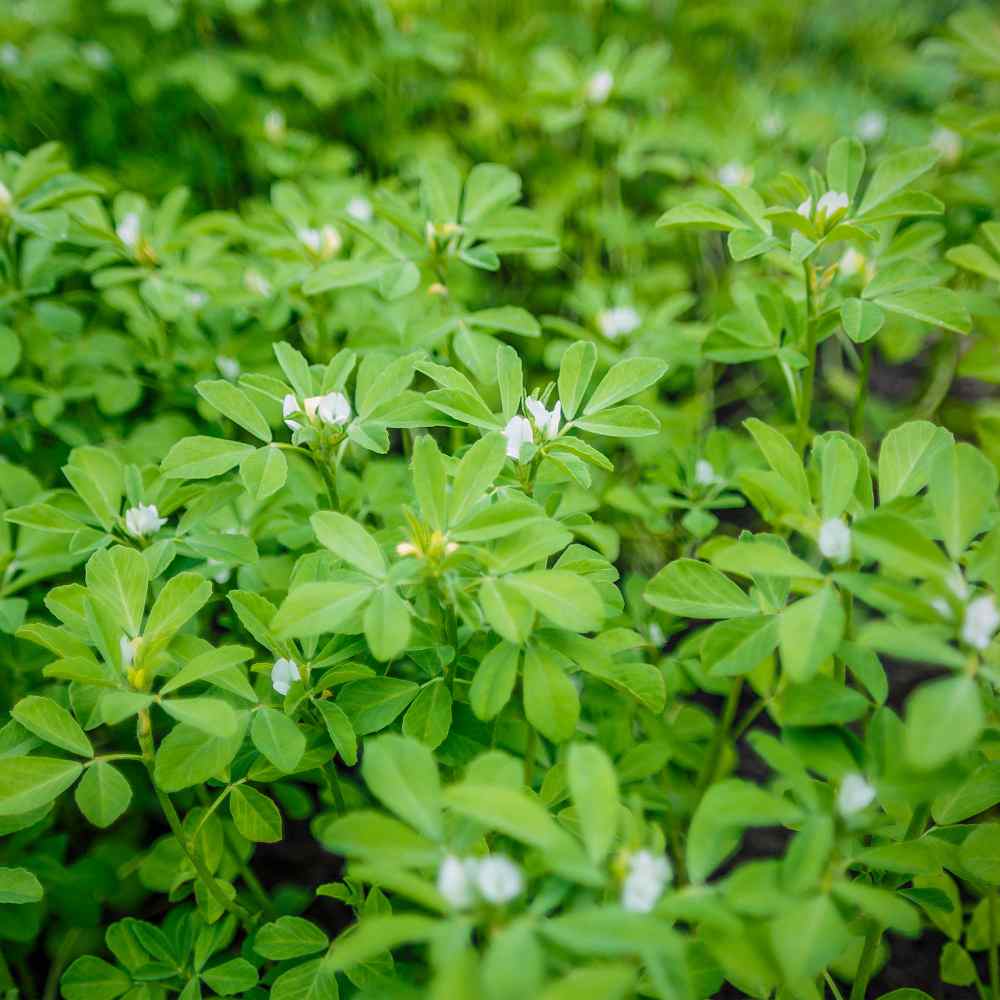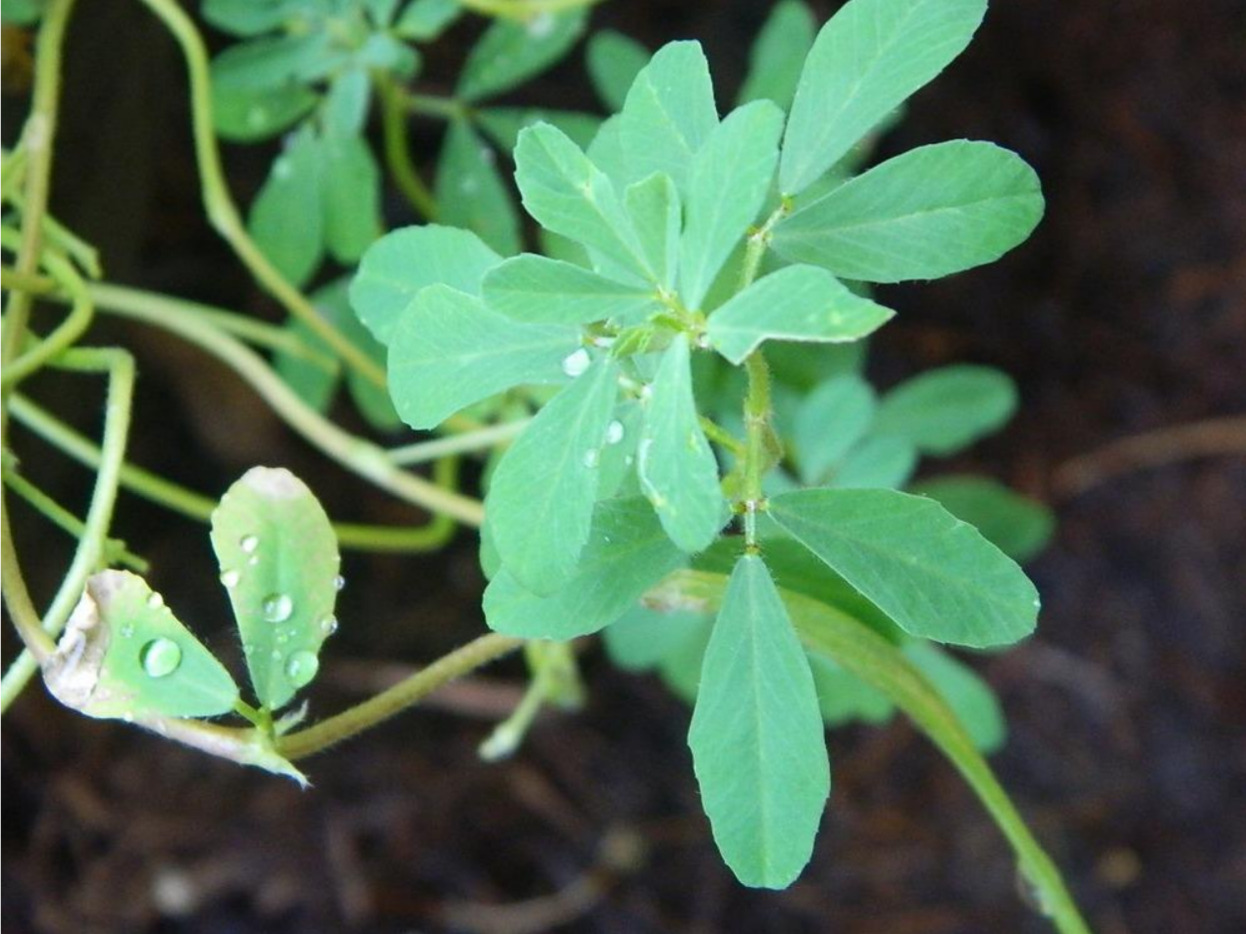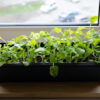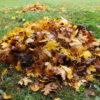Description
Fenugreek (A.K.A. Methi)
50 Seeds per pack
Annual Herb
Days to Maturity: Leaves 30-40 Days, Seeds 95-110 Days
Sun Requirements: Prefers Full Sun; Tolerates Light Shade
Botanical Name: (Trigonella foenum-graecum)
A staple in Indian, Middle Eastern, and Persian cuisines, fenugreek has been valued for centuries for both its aromatic leaves and flavorful seeds. Grown widely for culinary and medicinal purposes, it remains a popular herb across continents.
A fast-growing, low-maintenance plant that thrives in full sun and well-drained soil, it grows upright to about 24 inches tall and 12 inches wide, with deep green, clover-like leaves. As it matures, slender pods form, each holding 10–20 golden-brown seeds. Leaves can be harvested early for fresh use, while the seeds require additional time to fully mature within the pods. Fenugreek is ideal for raised beds, traditional plots, containers—and is also well-suited for growing as microgreens thanks to its quick germination and tender, flavorful early growth.
The fresh leaves, known as “methi,” offer a milder, delicate flavor that adds depth to curries, breads, and pickles. The seeds, when toasted or cooked, develop a rich, nutty sweetness with hints of maple, enhancing spice blends like garam masala and berbere. Sprouted seeds are delicious in salads, and ground seeds are often brewed into soothing teas. The plant’s small pale-yellow flowers are highly attractive to pollinators, making it a beneficial companion in the garden. Both seeds and dried leaves store well, retaining their flavor for months when kept in dry, cool conditions.
Traditionally, fenugreek has also been prized for its medicinal qualities, aiding digestion, soothing inflammation, supporting respiratory health, stimulating milk production in nursing mothers, and managing blood sugar levels. Rich in fiber, iron, and magnesium, fenugreek is a healthy and flavorful addition to the garden and kitchen alike.
Disease Resistance: Good resistance to common pests and diseases.
Medical Disclaimer:
This information is for educational purposes only and is not intended as medical advice. Fenugreek (Trigonella foenum-graecum) may lower blood sugar, affect hormone levels, and interact with medications such as blood thinners or diabetes drugs. It also may cause allergic reactions, especially in those with legume sensitivities, and may lead to digestive discomfort in some individuals. Consult a qualified healthcare provider before using fenugreek if you are pregnant, nursing, taking medication, or have a medical condition. Discontinue use if any adverse effects occur.
Planting Instructions for Fenugreek Seeds
When to Plant:
Fenugreek develops a strong taproot and does not transplant well, so direct sowing is best. Plant seeds outdoors from mid-spring through early summer, once all danger of frost has passed and soil temperatures are consistently above 60°F (16°C). In warmer climates, fenugreek can also be grown year-round, though it performs best in the shoulder seasons of spring and fall. For faster germination, soak seeds in room temperature water overnight before planting.
Where to Plant:
Choose a site with full sun exposure—at least 6 hours of direct sunlight per day. While fenugreek tolerates partial shade, lower light will reduce growth and seed yield. It thrives in loamy, well-draining soil and can tolerate poor or slightly saline conditions. Avoid overly sandy soil or heavy compost at planting time. Fenugreek thrives without added nitrogen, because it works closely with nitrogen-fixing rhizobia—soil-dwelling bacteria that take up residence in the plant’s root nodules and convert atmospheric nitrogen into a form the plant can use. This trait makes fenugreek especially well-suited to enriching tired garden soil.
How to Plant:
Sow seeds about ¼″ to ½″ (0.6–1.2 cm) deep, spacing them 2–4″ (5–10 cm) apart in rows spaced at least 6″ (15 cm) apart. In containers, use a wide planter at least 6″ deep and fill with light, well-draining soil. Keep the soil consistently moist but not wet during germination, which usually takes 3–5 days. Because fenugreek is a dark germinator, be sure to cover seeds thoroughly with soil after sowing.
Growing Tips:
Fenugreek is relatively low maintenance. Water only during prolonged dry spells, and avoid overwatering—soggy soil may cause root issues. The plant rarely needs fertilizer and should not be amended with manure or compost at the time of planting. If desired, pinch back early growth to encourage bushier plants. To do this, wait until the seedlings have developed at least two sets of true leaves, then use your fingers or clean scissors to gently remove the topmost growing tip just above a leaf node. This light pruning encourages the plant to branch out rather than grow tall and spindly.
Harvesting:
Leaves can be harvested when the plants are 4–6″ tall, about 3–4 weeks after sowing. Snip the top third of the stems to allow for regrowth, and repeat every two weeks until flowering begins. For seed harvest, allow the plant to mature fully—usually within 95-110 days. Pods form in late summer and turn brown as they dry. Once pods begin to split, collect and dry the seeds thoroughly before storing them in an airtight container.
Seed Viability & Storage:
Fenugreek seeds will keep their vigor for up to 2–3 years if stored in a cool, dry, and dark place. For added convenience, we offer seed-saving envelopes to help keep your collection neat and well-labeled.
FAQ:
What is the historical or notable background of Fenugreek?
Fenugreek has been treasured for centuries across Indian, Middle Eastern, and Persian cultures for its aromatic leaves and flavorful seeds, used in both culinary and medicinal traditions.
How would you describe the flavor of Fenugreek?
The fresh leaves of Fenugreek offer a delicate, slightly bitter taste perfect for curries and breads, while the seeds, when cooked or toasted, develop a rich, nutty sweetness with hints of maple.
What does Fenugreek look like, and what are its growing habits?
Fenugreek grows upright to about 24 inches tall and 12 inches wide with deep green, clover-like leaves, producing slender pods that contain 10–20 golden-brown seeds as it matures.
How and when do you harvest Fenugreek?
Fenugreek leaves can be harvested by snipping the top third of the stems about 30–40 days after sowing, with harvesting repeated until the plant begins to flower. Seed pods are ready to harvest once they turn yellowish and the seeds inside are a yellowish-brown color.
When is the best time to plant Fenugreek?
Plant Fenugreek after the last frost when temperatures are mild, either by starting seeds indoors 3–4 weeks early or direct seeding outdoors once the risk of frost has passed.
What are the common culinary uses for Fenugreek?
Fenugreek leaves and seeds are widely used in cooking, enhancing dishes like curries, pickles, spice blends such as garam masala, and even brewed into soothing teas.
What’s the best way to store Fenugreek after harvest?
To best store Fenugreek seeds, ensure they are fully dry (below 12% moisture) and keep them in an airtight container in a cool, dark, and dry place; for long-term storage, freezing is recommended. Fenugreek leaves can be chopped and frozen after harvesting and removing the roots.
What nutrients does Fenugreek provide?
Fenugreek is rich in fiber, iron, and magnesium, offering nutritional benefits alongside its flavorful addition to meals.
Does Fenugreek have any notable disease resistance?
Yes, Fenugreek shows good resistance to common pests and diseases, making it a low-maintenance and reliable herb for home gardeners.


















Patricia Q. (verified owner) –
Awesome seed and seed company
Ashley (verified owner) –
Can’t wait for this to grow for me